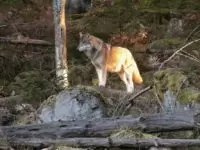
Wildlife administration is the supervision of wildlife-related organizations, projects, and activities. This field involves overseeing and assessing operations, budgets, and employees. It may also involve coordinating conservation efforts with officials from other organizations.
A wildlife administrator is a mid-career, managerial-level scientist who is in charge of wildlife organizations, projects, and activities. For example, they may preside over nonprofits, wildlife refuges, or state and federal wildlife offices and regions.
What Does a Wildlife Administrator Do?
Wildlife administrators plan and direct habitat restoration plans, wildlife management plans, and wildlife surveys. They set goals for their organizations, and develop strategies to achieve them. They often confer with scientists and regulators to plan projects, and ensure they comply with all relevant regulations. They must assess the effectiveness of activities and write reports.
Wildlife administrators may also oversee daily operations and facilities, and develop strategies, plans, or procedures for them. Their management responsibilities also include developing budgets and supervising employees.
Since habitats often cross state lines, some administrators coordinate wildlife protection and restoration projects with managers at other organizations. Others lobby politicians for increased funding or stronger wildlife laws and regulations. They advocate for the resources that make wildlife conservation possible, and do extensive planning to make the most of those resources.
Where Does a Wildlife Administrator Work?
Wildlife administrators work for state and federal wildlife agencies. They also work for nonprofit wildlife organizations. Some work for independent consulting firms. While the spend much of their time handling paperwork, creating plans and documents, and managing employees from their offices, they also go into the field to supervise and assess operations. They are exposed to all kinds of weather, rough terrain, and potentially dangerous wildlife while working in the field. Most wildlife administrators work full time. They may need to work overtime to meet short deadlines.
What is the Average Wildlife Administrator Salary?
Wildlife administrators ,who fall under the broader BLS category of natural sciences managers, earned a median salary of $137,940 as of May 2020. Those working in federal government ($123,190) made more than those employed by state agencies ($86,280).*
What is the Job Demand for Wildlife Administrators?
Employment of natural sciences managers is projected to grow 6 percent between 2020 and 2030.* Retirements will open up some opportunities. However, competition for these jobs will be strong, as these higher-paying managerial positions also allow for more independent decision-making.
How Can I Get a Wildlife Administration Degree?
Wildlife administrators and other natural sciences managers usually advance to these higher-level positions after years of working as scientists. These scientists typically have bachelor's degrees in environmental biology, general biology, agriculture, natural resource management, environmental chemistry, or related disciplines. Classes in environmental policy, environmental economics, sociology, project management, and technical writing are also helpful.
More than half of natural sciences managers have advanced degrees. While many hold master's and doctoral degrees in scientific fields, some pursue a Master of Business Administration (MBA) or a Master of Public Administration (MPA). There are even some advanced degree programs in Fisheries and Wildlife Administration specifically.
Other Degrees Related to Wildlife Administration
What Kind of Societies and Professional Organizations Do Wildlife Administrators Have?
- U.S. Fish and Wildlife Service
This bureau within the federal government's Department of the Interior ensures that all wildlife laws and restoration projects are being properly enforced and executed. It publishes Fish and Wildlife News, a newsletter written by and about Fish and Wildlife Service employees in offices around the nation. It's not only a great resource for current wildlife laws, but also a source of federal employment. - The Wildlife Society
This non-profit conservation society provides wildlife administrators with free information and meetings to ensure that professionals are always up-to-date on the latest findings. They also offer internships to those who wish to become wildlife administrators. - Teaming With Wildlife
This coalition of state fish and wildlife agencies, wildlife biologists, and nature enthusiasts advocates for grant funding and strong State Wildlife Action Plans. The organization aims to increase protection of wildlife by strengthening fish and wildlife agencies. Teaming with Wildlife is an excellent source of information about the issues that face wildlife administrators, including different types of available funding and wildlife action plans. - Association of Fish & Wildlife Agencies
This advocacy organization lobbies Congress and the White House in support of strong, science-based wildlife policy. It also coordinates species conservation efforts across states. The “Focus Areas” section of its website is a great resource for profiles and best practices relating to several wildlife-related issues.
*2020 US Bureau of Labor Statistics salary figures and job growth projections for natural science managers reflect national data not school-specific information. Conditions in your area may vary. Data accessed September 2021.





